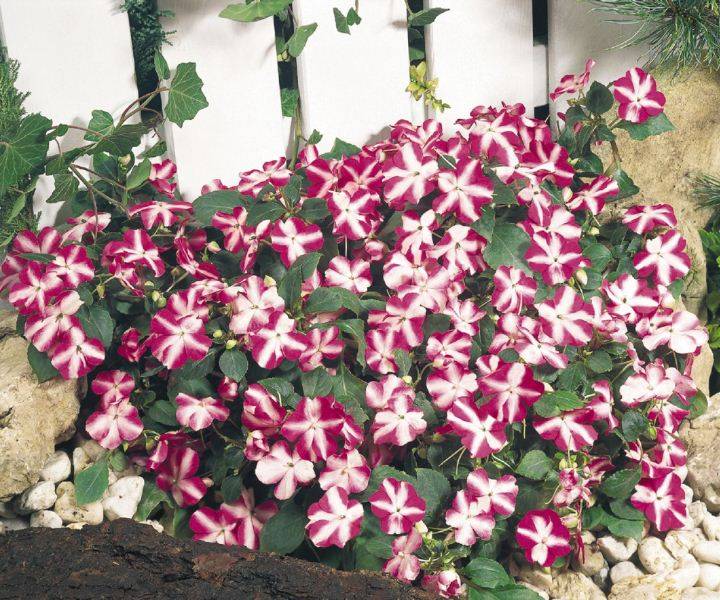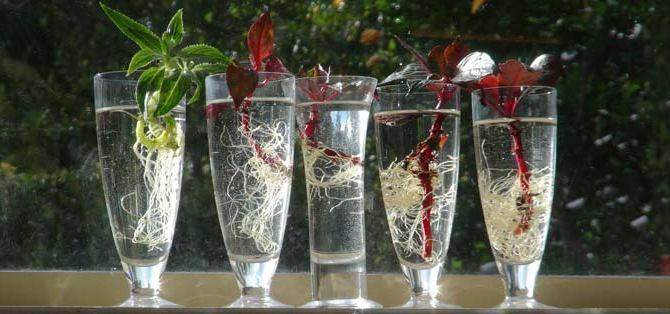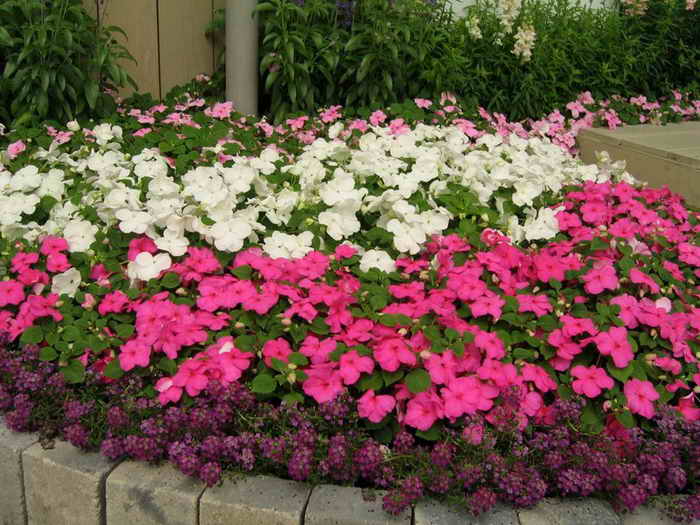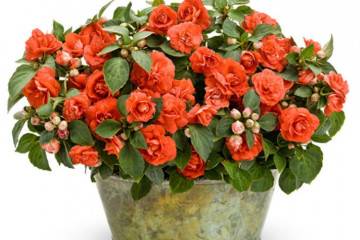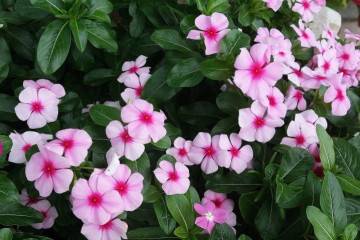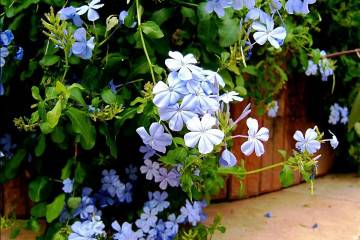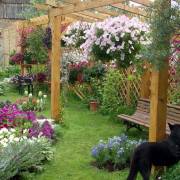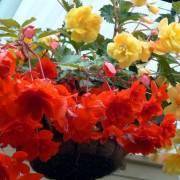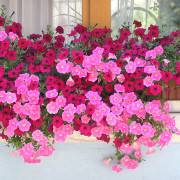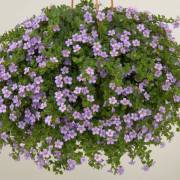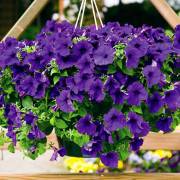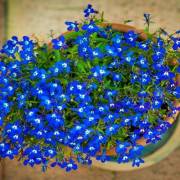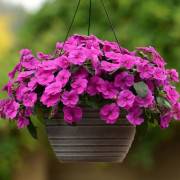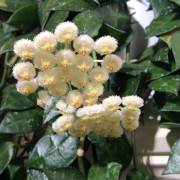Ampelous balsams in landscape design
Content:
Ampelous balsam is one of the most popular flowering plants with weaving shoots. It is planted for decorative purposes in pots and pots. A beautiful, bright flower is very moody, picky about the conditions of detention, and therefore is not suitable for novice gardeners.
Balsam ampelous
Growing and maintaining the lush flowering of ampelous balsam is not an easy task, but the work entrusted will be rewarded with the beauty and tenderness of blossoming colorful petals.
General information
Balsam is a genus with more than 500 herbaceous perennial and annual flowers. This is an ever-flowering flower that, with proper care, throws out new inflorescences throughout the year. In gardens it is grown as an annual, in indoor conditions as a perennial.
Botanical description and history of origin
Homeland - North America and African subtropics. It was brought to Europe in 1596, and immediately gained wide popularity.
Depending on the variety, the petals can be painted in different colors:
- purple;
- pink;
- red;
- Orange;
- white.
The flower reaches a diameter of 4 to 8 cm. The seeds are in green bolls that form as they ripen. There are hybrid varieties with double petals.
The height of the juicy stem is 15-50 cm. Leaves of various colors - green, burgundy, green with a red tint, bronze. The edges are wavy.
Interesting Facts
Balsam is a unique flower, the exact history of the origin of which is not known for certain. The following facts are known about him:
- People call him touchy. This is due to the peculiarity of the ripening of the grain capsule. A light touch is enough for it to burst, and the grains scattered around, giving life to new flowers.
- In everyday life, the name "Vanka Wet" is widespread - water drops periodically appear along the edges of the leaf plates.
- Balsam, depending on the color of the petals, affects the psycho-emotional state of a person and his personal characteristics.
Lilac color improves mental ability, pink increases emotionality.
Balsams in the wild
Balsam is represented by shrubs, the height of which can reach 2 m. It is grown at home and in gardens, in the open field.
Popular types of ampelous balsams
Among the rich variety of varieties, only a few of them are in high demand among gardeners.
Balsam ampel toggle switch
The petals are white, 4 to 5 cm in diameter.
Balsam ampelous terry Waller Atena Appleblos
The main color of the petals is white, inside they are painted in a pale pink color. The diameter of the flowers is 4-5 cm.
Ampelous balsams in landscape design
This flower is widely used in landscaping. They decorate balconies and loggias, terraces. Small multi-colored petals look organically in gardens, in flower beds, in rock gardens.
How to grow ampelous balsam
To get a beautiful flower that will delight with its lush flowering all year round, the gardener must know everything about sowing the seeds of ampelous impatiens balsam and the features of its content.
The easiest way to grow a new flower is from cuttings. In the spring, young, strong, well-developed shoots are cut off from an old, adult bush. Their length should be about 8-10 cm. Cuttings should be lowered into water or damp earth with sand.
Seedling development stages and balsam care
In order for ampelous balsam to develop and bloom, you need to adhere to a number of recommendations regarding the selection of soil and watering.
Soil composition
The soil for balsam should be fertile, enriched with minerals and nutrients. The soil can be made independently, for this, mix in equal parts:
- river sand;
- vermiculite;
- peat;
- surface leafy ground (humus).
The components are thoroughly mixed. But ready-made soil with an identical composition can be bought in special stores.
The biotechnology of planting balsam requires a thin layer of sand at the bottom of the flowerpot. This is necessary in order to prevent root decay.
Lighting and location
If the gardener decided to ennoble his flower bed with delicate bushes, you need to know how to plant a balsam flower, how to care for it. For successful cultivation, they choose a comfortable growing place with abundant lighting, but without direct sunlight. The light should be diffused. If the sun is not enough, the flowers will start to fade.
Reproduction from seeds
You can plant balsam not only with cuttings, but also with seeds. They are purchased in a specialized store or harvested from a ripe flower.
Balsam seed sowing technique
Algorithm of actions:
- Preparation of fertile soil, which is poured into the box.
- The grains are inserted into the ground, but do not deepen; they must be sprinkled with a thin layer of river, sifted sand.
- Cover the box with plastic wrap or glass. This will help create a greenhouse effect, in which the seedlings will germinate more actively.
- A box with planting material is placed in a warm room and provides sufficient sunlight, but not direct, but diffused, lighting.
- To prevent the soil under the film from becoming moldy, it must be ventilated. Every day, for 30-40 minutes, the film or glass is removed and the container is taken out to fresh air.
- Watering is regular, but it is impossible to flood the soil too much.
After 5-10 days, the first shoots will begin to appear. As soon as the first 2-3 full-fledged leaves appear on them, they are transplanted into separate pots. After a pick, you need to water the flower every day, but in moderation.
How and when to plant
Disembarkation takes place in March. To increase the likelihood of obtaining high-quality seedlings, the seed is soaked in a weak solution of potassium permanganate for 2-3 hours before being placed in the ground. Immediately before planting, the grains are rinsed with water.
Adult plant care
To get a beautiful balsam bush and a lush bloom on it, every gardener needs to know how to care for it.
The flower is provided with proper watering. It should be moderate, but sufficient.It is best to focus on the state of the earth in the frequency of humidification - it should not completely dry out.
In winter, the frequency of soil moisture is reduced.
Fertilizers, plant nutrition
Top dressing is necessary during the period of active flower growth, April – August. Complex mineral fertilizers are suitable.
When choosing a suitable fertilizer, they carefully read its composition; it should not have a high nitrogen content. A large amount of nitrogen leads to active growth of greenery, inhibiting the appearance of inflorescences.
A good fertilizer contains the following components:
- iron;
- magnesium;
- nitrogen;
- copper;
- molybdenum;
- phosphorus;
- manganese;
- zinc;
- boron
For lush flowering, it is recommended to feed with Kristalon - 1 tbsp. l. for 5 liters of water, apply once a week.
Common diseases and pests
Balsam is vulnerable to disease in the cold season. Due to improper watering, a fungus may appear on the flower - gray rot. This is a dangerous disease, the treatment of which involves the removal of damaged parts and transplanting the bush into new soil.
Of the pests, a spider mite can attack a flower. Signs - the appearance of small white dots and thin cobweb threads on the foliage, the curling of the leaves inward. To combat the tick, Neoron and Actellik are used.
Whitefly is another insect that can harm leaves and buds. Signs - rapid yellowing of the leaves. Treatment is carried out with the drugs Decis or Fufanon.
Balsam is a bright, delicate flower, beautiful for its decorative properties. It is planted on balconies and in gazebos, on flower beds in the open field. The content of balsam cannot be called easy, but all the work is worth admiring the constant, lush color of a rich palette of petals all year round.

